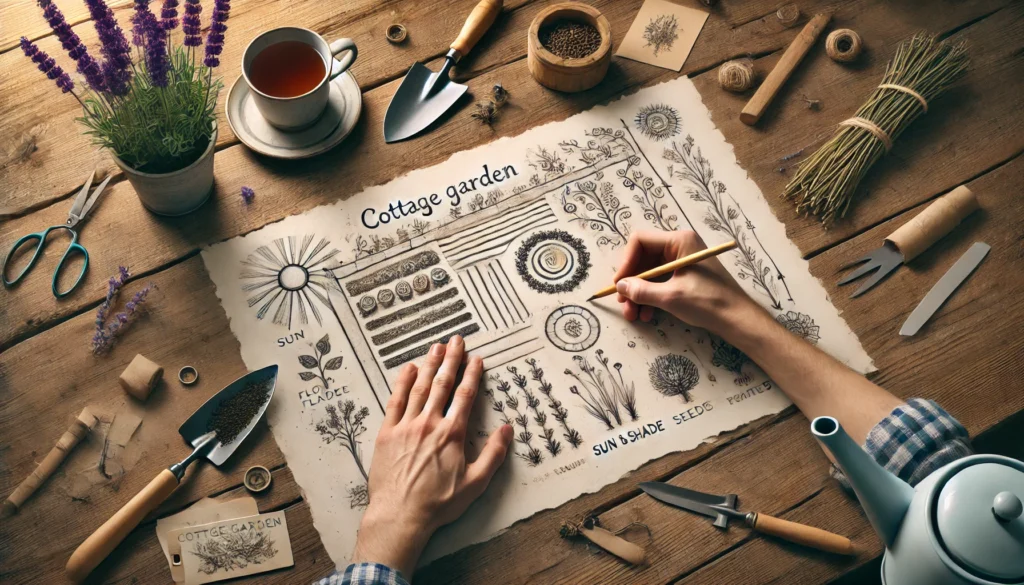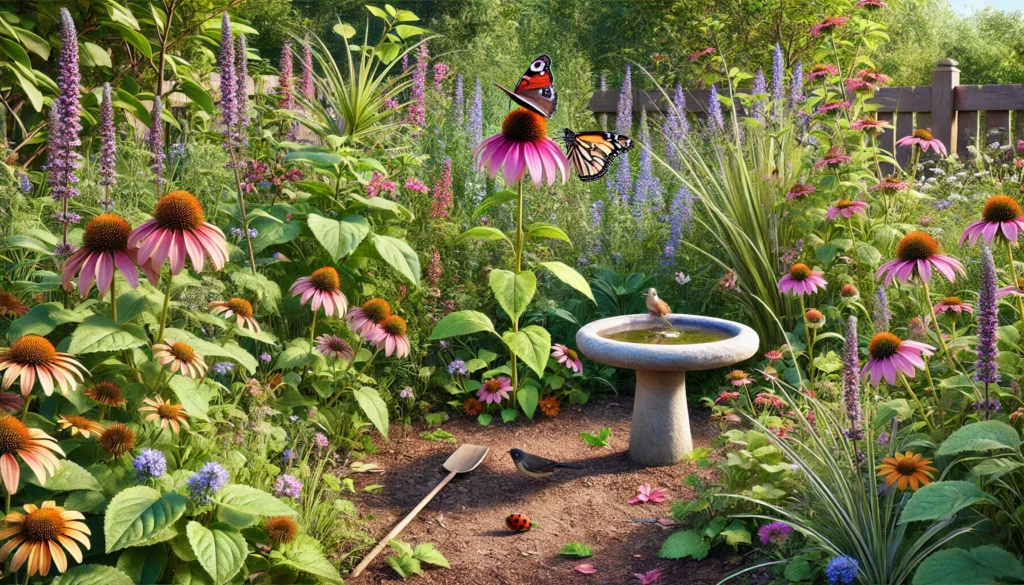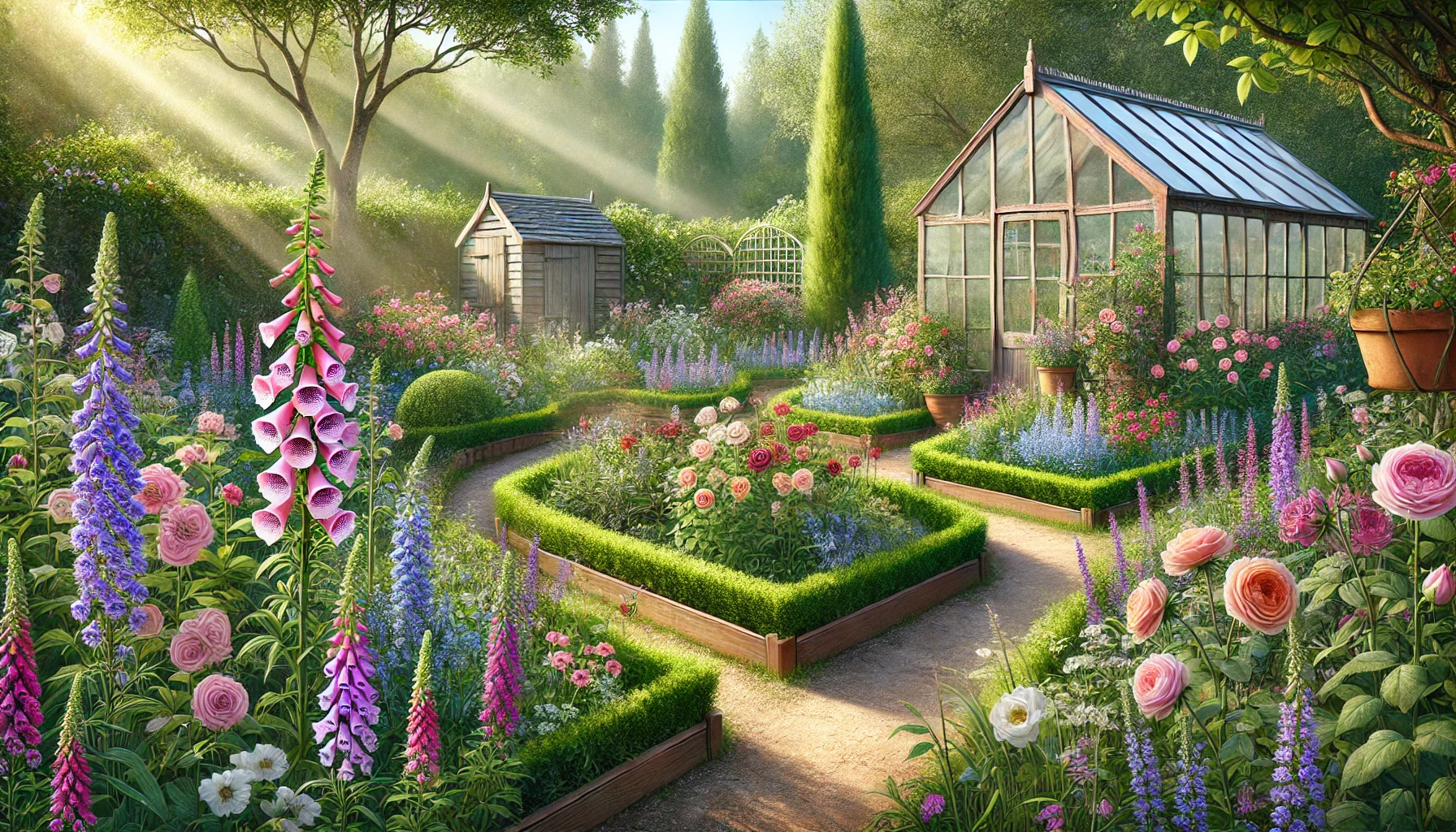Dreaming of a lush, flower-filled yard that feels like stepping into a storybook? 🌸 A cottage garden might be just what you need. It’s not about rigid rules—it’s about letting nature take the lead while you guide it with thoughtful touches. Whether you have a large yard or a small patch of grass, you can start your own version with the right garden ideas and a bit of planning.
Let’s walk through how to create a cottage-style garden, step-by-step, based on what works in U.S. growing zones.
Start Your Cottage Garden: Easy Ideas for Beginners
1. Sketch Your Layout First 📝
Before grabbing your tools or shopping for plants, take time to plan. Use a piece of paper or garden planner to sketch your yard. Mark sunny and shady spots, note windy areas, and figure out what parts stay damp or dry. This basic layout will help you choose the right plants and place them correctly—saving time and money later.
Tip: Observe your garden over a few days at different times. Sunlight can shift dramatically through seasons.

2. Work With, Not Against, Your Conditions
Your garden’s microclimate matters. Even your neighbor’s yard might behave differently! Pay attention to:
- Soil type: Is it sandy, clay-heavy, or loamy?
- Drainage: Does water pool after rain?
- Sunlight: Is that corner shady all day, or does it get morning sun?
If unsure, buy a simple soil testing kit. This will help you select plants that thrive where you plant them.
3. Start with Structure
A classic mistake in cottage garden design is skipping structure. While flowers steal the show, evergreen shrubs, small trees, and hedges provide year-round form and balance. They also create homes for wildlife. You don’t need many—just enough to anchor the beds and create flow.
Popular structural plants include boxwood, hydrangeas, viburnum, or even a small ornamental tree like dogwood or Japanese maple.
4. Add Flower Beds and Raised Beds
You can create depth and shape by cutting out curved flower beds from your lawn or adding raised beds. These are ideal if your soil is difficult to work with. Fill them with rich, well-draining soil and mulch yearly to condition it.
In your flower beds, layer your plants: place taller flowers like delphiniums and hollyhocks in the back, mid-height bloomers in the middle (like daisies or echinacea), and shorter flowers like alyssum or violas up front.
5. Use Seasonal Color to Your Advantage 🎨
To enjoy a garden that blooms from spring to fall, choose plants that flower at different times. Here’s a quick seasonal idea list:
- Spring: Tulips, daffodils, snowdrops
- Summer: Roses, sweet peas, cosmos
- Fall: Dahlias, asters, rudbeckia
Mix annuals and perennials for variety and reliability. Remember, a cottage garden is all about abundance and layers of texture.
6. Don’t Forget Herbs and Edibles
Herbs like rosemary, lavender, thyme, and chives not only add texture and fragrance but also support pollinators. You can also tuck in some edibles—think lettuces, strawberries, or even tomatoes—as part of the planting scheme.
Raised beds work well for this, and they make harvesting easier, too.
7. Welcome Wildlife 🐝
Avoid pesticides when possible and encourage helpful insects. Ladybugs, bees, butterflies, and birds will become regulars in your garden if you create a welcoming habitat. Some ideas:
- Add a small bird bath or feeder
- Let fallen leaves stay in one area as a bug hotel
- Plant native species alongside classic cottage garden blooms

8. Keep It Low Stress
You don’t need to do everything at once. Start with one corner. See how the plants grow. Take photos. Learn what works in your space. Mistakes happen—that’s part of the gardening adventure!
Plant labels will tell you light requirements and mature height. Check those so you don’t plant tall flowers in front of shorter ones. If a plant struggles, try moving it. Gardening is a creative, forgiving process.
9. Mulch and Maintain
Each spring, mulch your beds with compost, bark mulch, or grass clippings. This keeps weeds down, feeds the soil, and gives your garden a tidy, fresh look. Try to mulch before weeds take hold—usually around March or April.
10. Enjoy the Process, Not Just the Results 🌱
The real beauty of a cottage garden is in how it changes with you. Each year brings something new. A new plant, a garden visitor, or a small win—like that first blooming rose or a bee nest near your herb patch.
More than just a design style, this type of garden becomes part of your home’s soul.
❓FAQ
1. What is a cottage garden layout?
It’s a loose, informal garden plan with layers of flowers, shrubs, and paths. You usually mix textures, heights, and colors.
2. What are the best plants for a cottage garden?
Perennials like roses, delphiniums, foxgloves, and daisies work well. Add some shrubs and seasonal bulbs.
3. Can I grow a cottage garden in a small yard?
Absolutely! Use raised beds, vertical trellises, and layered planting to make the most of limited space.

Leave a Reply